
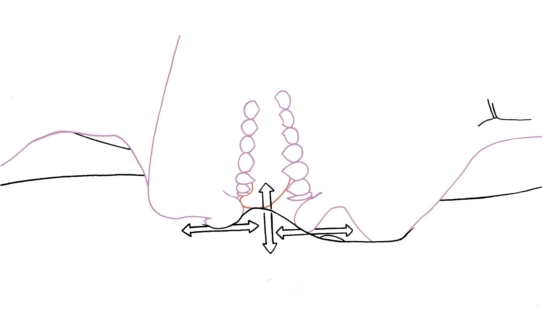
Communication of change in lip location (near horizontal directions) or suction (vertical finger pressure)
III. Lips and suction


Communication of change in lip location (near horizontal directions) or suction (vertical finger pressure)
A distance between the ends of the OW's extended index finger and thumb of their left hand on the RE's scalp may suggest a distance between the RE's lips. A change in this distance may command a change in how wide the RE's lips are from eachother.
The ear-pulling exercise, but with the OW's right hand on the RE's ear that's on the same side of both spines as this hand, may direct the two lips' location range and reference on the RE's scalp. Whether or not the RE's mouth is closed, the two lips would move simultaneously, by the same distance and angles by the distance and angle of this pull. If the OW's right hand is off that ear of the RE, the OW's left pinky finger stroking one way or another, as the OW's left index finger and thumb are on the RE's scalp in the same constant location, may adjust the reference and range distances between the two lips. This assumes this pinky finger nail would be longer than the ring finger nail on the same hand.
Complication with tongue directions are addressed later. But for now, it may be recognized that the lips can travel a limited distance before the tongue would need to travel with them. And the RE's tongue can't twist by the force of their body without their jaws moving?
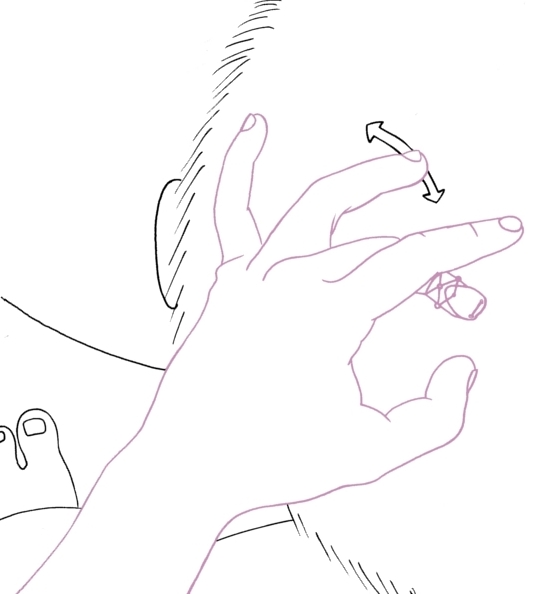
Communication of point of reference or range of suction
The pressure of these fingers may direct an amount of suction. Points of reference or a range of suction may be communicated by strokes of the ring finger on this same directing hand. As pressure and location of the index finger (or middle finger, to be discussed later) and thumb remain constant, the ring finger stroking one way may increase mouth suction, and vice versa.

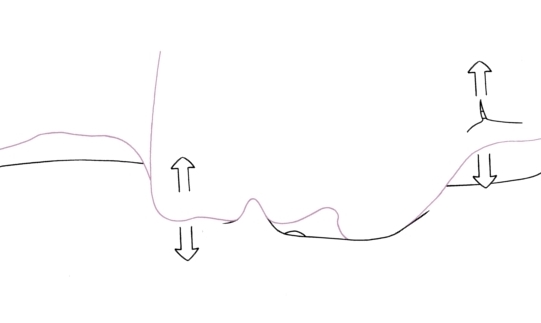
**As of April 2025, through practical experience, maintaining suction near a buddy's navel can be extremely difficult to do for over a few seconds, due to the Performer's blocked nasal airflow. The feet related practices may be easier.**
These two commands of location and pressure could instruct the lips to clamp a certain part of the skin. As the OW's index finger (or middle finger, to be discussed later) and thumb are on the RE's scalp, the OW's left hand palm may also apply some pressure, then they may lift their index finger and thumb from the scalp, directing the RE to clamp and pull the OW's skin with the RE's lips until this palm pressure stops. The strength of skin pulling may be directed by the amount of palm pressure.
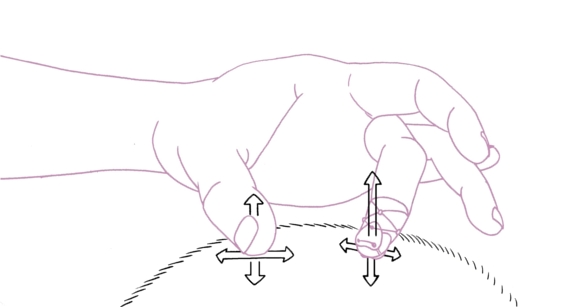


When the ends of the OW's extended middle finger and thumb are on the RE's scalp, this may imply the RE's teeth are against the skin of the OW as the RE's lips still have some sucking role. To distinguish the feel between the middle and index fingers, a nut or seed shell may be ground or cut, drilled, and tied onto the fingertip.
An alternative idea was shown in part of the storyboard.
A gloved alternative
What may make more practical sense for the RE distinguishing all the fingers of the OW's left hand, and their right hand, is to first recognize that the OW's left hand and right hand, if making different commands simultaneously, or acting alone, one at a time, would be touching the RE's scalp in very different ways, at different angles and different locations. More on the location differences are mentioned later.

Pinky nail strokes adjust reference jaw width,
ring fingernail strokes adjust reference pressure or suction,
middle finger and thumb strokes adjust ongoing jaw width changes when RE's teeth contact OW's skin,
index finger and thumb strokes adjust ongoing jaw width changes when RE's lips extend away from their teeth and contact OW's skin
The OW's left hand could wear a glove. The index finger would be bare down to the palm's knuckle with a very short nail. The middle finger would be surrounded by leather until just past the center joint, with a noticeably longer nail. The range and reference adjusting fingers, the ring and pinky, would be surrounded by leather until just past the terminal joints. The ring finger nail would be short. The pinky finger nail would be long.
When this hand is in use, and just the change in the RE lips' pressure and location are adjusted, the index finger and thumb are extended. The terminal joints of the 3 other fingers are touching, or close to touching, the RE's scalp at an angle like they are curled or retracted, like a shadow puppet. Either the pressure or lip width range and reference commands may be used while this index finger and thumb are extended on the RE's scalp and the middle finger isn't close to being fully extended.
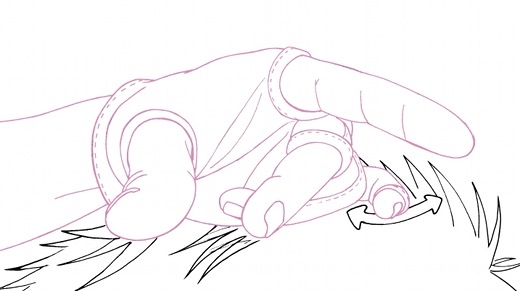
If the RE's teeth are making contact with the OW's body, and just the change in these jaws' pressure and location are adjusted, the OW's index finger may stay fully extended, while the ends of the OW's middle finger and thumb are on the RE's scalp. Either the pressure or jaw width range and reference commands may be used while the ends of this middle finger and thumb are on the RE's scalp.
VIII. Harmonious and holistic speed adjustment
IX. Recording and recalling memory

This work is licensed under a Creative Commons Attribution-NonCommercial 4.0 International License.